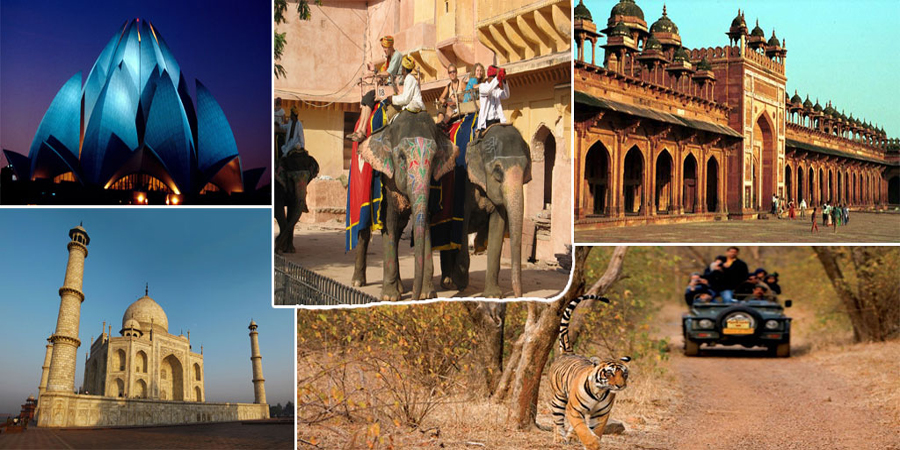Introduction to the Golden Triangle Tour
Embark on a journey that blends the opulence of the Golden Triangle with the untamed beauty of Ranthambore National Park. Imagine immersing yourself in vibrant culture, exploring historic landmarks, and encountering majestic wildlife – all in one unforgettable adventure. Get ready to discover why combining the Golden Triangle Tour with Ranthambore is a must for every traveler seeking a diverse and enriching experience in India!
What is Ranthambore National Park?
Nestled in the eastern part of Rajasthan, Ranthambore National Park is a wildlife enthusiast's paradise. Sprawling over 392 square kilometers, this park is renowned for its population of Bengal tigers. The majestic predators roam freely amidst the rugged terrain and ancient ruins, creating an awe-inspiring sight for visitors.
Apart from tigers, Ranthambore is home to a diverse array of flora and fauna. The park's landscape features rocky hills, lush green forests, and serene lakes that provide a picturesque setting for nature lovers. Birdwatchers can also delight in spotting over 300 species of birds here.
Visitors can embark on thrilling safaris through the park's varied habitats to catch glimpses of not just tigers but also leopards, sloth bears, wild boars, and more. With its rich biodiversity and stunning landscapes, Ranthambore National Park offers an unforgettable wilderness experience that showcases the beauty and resilience of India's natural heritage.
Benefits of Combining the Golden Triangle Tour with Ranthambore
When you combine the Golden Triangle Tour with Ranthambore, you get the best of both worlds. The cultural richness of cities like Delhi, Agra, and Jaipur blends seamlessly with the raw beauty of Ranthambore National Park.
One major benefit is the diverse experiences you'll have during this trip. From exploring ancient forts and majestic palaces to spotting tigers in their natural habitat, every day presents a new adventure.
Moreover, by adding Ranthambore to your itinerary, you can break away from the hustle and bustle of city life and immerse yourself in nature's tranquility. It offers a unique opportunity to witness wildlife up close and create unforgettable memories.
Combining these two destinations allows for a well-rounded journey that caters to both history buffs and nature enthusiasts alike.
Experience Wildlife and Nature at Ranthambore
Nestled in the Sawai Madhopur district of Rajasthan, Ranthambore National Park is a true paradise for nature enthusiasts and wildlife lovers alike. Spread across 392 square kilometers, this sprawling reserve is home to a diverse array of flora and fauna.
Embark on an adventurous safari through the park's rugged terrain and dense forests, where you may spot majestic tigers roaming freely in their natural habitat. Keep your camera ready as you might also encounter leopards, sloth bears, wild boars, and various species of deer.
The park's picturesque landscapes offer a serene backdrop for bird-watching enthusiasts with over 300 avian species to admire. From colorful kingfishers to magnificent eagles soaring high above the canopy, Ranthambore is a haven for birdwatchers.
Immerse yourself in the tranquility of nature as you witness breathtaking sunsets over ancient ruins and tranquil lakes within the park. The unique blend of history and wildlife at Ranthambore makes it a must-visit destination for those seeking an unforgettable experience amidst nature's wonders.
Uncovering the Rich Cultural Heritage of the Golden Triangle
When embarking on a Golden Triangle Tour with Ranthambore, you are not just exploring iconic landmarks but also delving into rich cultural heritage. The journey starts in Delhi, where the bustling streets narrate tales of Mughal empires and colonial influences. From the majestic Red Fort to the serene Lotus Temple, each site unveils layers of history.
As you move on to Agra, the city echoes with romance at the enchanting Taj Mahal - a symbol of eternal love that mesmerizes all who lay eyes on its pristine beauty. Not far away lies Fatehpur Sikri, a ghost town frozen in time, showcasing intricate architectural marvels from bygone eras.
Jaipur awaits with its vibrant hues and regal palaces like Amer Fort and City Palace. Dive deep into local markets brimming with handicrafts and traditional attire, immersing yourself in Rajasthani culture. Every corner of the Golden Triangle resonates with centuries-old stories waiting to be discovered by intrepid travelers like you.
How to Plan Your Golden Triangle Tour with Ranthambore?
When planning your Golden Triangle Tour with Ranthambore, start by deciding on the duration of your trip. Consider how many days you want to spend exploring each destination.
Next, research and select a reputable tour operator like Four Wheel Drive India Private Limited to help customize your itinerary based on your interests and preferences.
Make sure to include visits to iconic landmarks in Delhi, Agra, and Jaipur such as the Taj Mahal, Amber Fort, and Qutub Minar.
Allocate enough time for wildlife safaris at Ranthambore National Park to increase your chances of spotting tigers in their natural habitat.
Book accommodations in advance especially during peak tourist seasons to secure the best options that fit within your budget.
Don't forget to pack comfortable clothing, sunscreen, insect repellent, and sturdy walking shoes for an enjoyable and hassle-free experience.
Conclusion
To sum up, the Golden Triangle Tour with Ranthambore offers an incredible blend of culture and wildlife. From exploring iconic landmarks like the Taj Mahal to witnessing majestic tigers in their natural habitat at Ranthambore National Park, this tour provides a truly unforgettable experience. By combining these destinations, travelers can enjoy the best of both worlds - rich heritage and breathtaking nature. Planning your trip with Four Wheel Drive India Private Limited ensures a seamless journey filled with comfort and luxury. Embark on this adventure to create lasting memories and immerse yourself in the beauty of India's Golden Triangle with a touch of wilderness at Ranthambore.





Comments